A current application running in Wildfly (Jboss) uses its own Authentication system that internally verifies passwords and credentials on its Database.
This system is no longer viable for the future as we migrate to a microservices pattern, therefore requiring a distributed login system using OpenId Connect protocol for Authentication initially, authorization will come later.
This has been implemented fine with a new Spring boot microservice using Spring security and Spring OAuth2 client, however integrating those libraries with the old Jakarta EE application is proving a challenge.
Implementation
- Spring version - 5.3.13
- Spring Security version - 5.5.3
- Omnifaces version - 3.11.2
- Jakarta EE version - 8
- Wildfly application container - 23
- There is an existing Authentication system using Java EE HttpAuthenticationMechanism with a AuthenticatedUser bean which acts like a principal.
- I added Spring security and OAuth2 client to the Java EE application. It works fine and redirects people to an AWS Cognito SSO page and redirects back with authorization code after they login.
Here is a diagram summarizing what is currently hacked together
Testing
I created two basic JSF pages with backing beans, one secured with old Javax Security rules defined in web.xml and the other defined in Spring security configuration bean.
With the Spring secured page, I can get the Security context in the bean (I think this uses ThreadLocal)
e.g. Helloworld Backing Bean
@Named
@ViewScoped
public class HelloWorldBacking implements Serializable
{
private static final long serialVersionUID = 1L;
public String getAuthDetails() {
SecurityContext context = SecurityContextHolder.getContext();
Authentication authentication = context.getAuthentication();
return authentication.getName();
}
}
Spring Security Config
@Configuration
@EnableWebSecurity
@PropertySource("classpath:application.properties")
public class SecurityConfiguration extends WebSecurityConfigurerAdapter {
private final String clientSecret;
private final String clientId;
private final String issuerUri;
@Autowired
public SecurityConfiguration(@Value("${oauth.issuer-uri}") String issuerUri,
@Value("${oauth.client-id}") String clientId,
@Value("${oauth.client-secret}") String clientSecret) {
this.issuerUri = issuerUri;
this.clientId = clientId;
this.clientSecret = clientSecret;
}
@Override
protected void configure(HttpSecurity http) throws Exception {
http.sessionManagement()
.sessionCreationPolicy(SessionCreationPolicy.ALWAYS)
.and()
.csrf()
.csrfTokenRepository(CookieCsrfTokenRepository.withHttpOnlyFalse())
.and()
.cors()
.and()
.authorizeRequests()
.antMatchers("/helloworld-spring").hasAuthority("Admin")
.and()
.oauth2Login()
.and()
.oauth2ResourceServer()
.jwt();
}
...
However if I don't protect that JSF page with Spring security I cannot get any context.
Problem
When a JSF page has been secured with the old security way, it seems to go down a different path with contexts that are all managed by CDI.
I want to integrate Spring security principal into all parts of the JSF app. So that JSF is aware of it in its context.
Debugging
When debugging some existing pages, it appears that both Auth systems are activated but are divergent and not aware of each other.
Solutions?
As someone who has been spoiled by the luxury of spring boot auto configuration, I am a bit stuck on what to do.
Potentially its an easy fix with just overriding a class, or:
- Do I need to just rip out the old Authentication system that uses Java EE spec?
- Do I override some part of Spring security so that it is aware of Java EE and JSF?
- Does JSF need to be configured to talk to Spring security?
- Is there something higher level abstracted away in the Wildfly application server that needs to be configured?
tl;dr
How do I get Spring security to pass its security context to JSF in a Jakarta EE application?
Thanks
